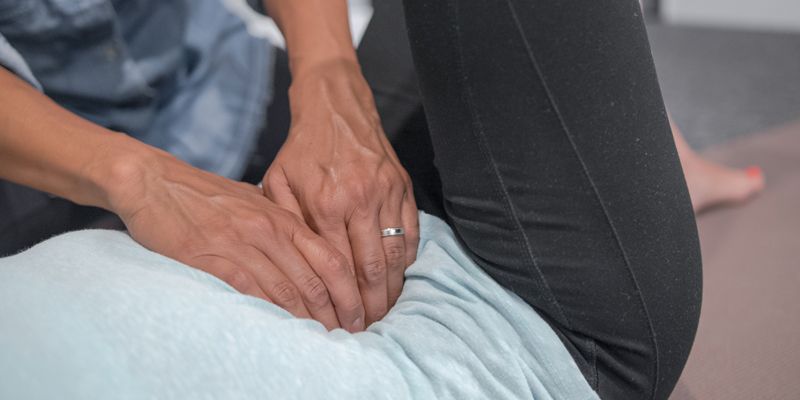
Pelvic floor physical therapists treat a variety of different pain, bowel, bladder, and sexual dysfunctions. We often use different manual or hands-on techniques for treating these dysfunctions – including massage and Myofascial release techniques. We use a technique called visceral mobilization to release the deep tissue surrounding the organs.
Visceral refers to all the organs in the body, such as the intestines, liver and bladder. Mobilization is making something move. You may think the organs of the body just sit there, not moving, but in reality our bodies inside and out are constantly moving and working.
Let’s take the bladder for example. The bladder sits very low in the pelvic cavity, just above and behind the pubic bones. It’s held in place by a ligament going to your umbilicus or belly button and is attached to the kidneys by the ureters. It also leads to the urethra which is anchored in the upper vaginal wall.
The bladder is made of muscle that can contract to push urine into the urethra or relax and allow urine to collect in the bladder sac. The bladder (and all organs for that matter) are covered in fascia which is a connective tissue typically made of collagen that helps to hold organs in place. Fascia also adds lubrication to allow the organs to glide on each other as we move or change the volume in the abdominal and pelvic cavities with eating and drinking.
The bladder needs room to move. It needs to grow bigger as it is filling and it needs to be able to stay in place even when it deflates or has more forces pushing down on it, such as during straining for a bowel movement or vaginal delivery of a baby. Sometimes, the fascia and muscles around the bladder become tight and stiff and don’t allow the organ to move properly.
When fascia becomes restricted around the bladder, it can increase urgency and frequency of urination – having a feeling of having to go to the bathroom right away and all the time (more than 1x every 3-4 hours). There may also be urinary leakage or retention with difficulty emptying the bladder. In this instance, we use visceral mobilization techniques to move the bladder around and try to improve the movement of the organ in the pelvic cavity.
During visceral mobilization, it often feels like a light pull or massage of the tissues in the area, but there is purpose behind the movement. We are trying to find the most restricted movement direction and improve that movement. Any organ can get “hung up” or restricted and may cause pain or discomfort in another area of the body.
For example, the liver sits in your right upper quadrant of the abdomen and has a strong fascial attachment to the diaphragm and rib cages. If the liver isn’t moving well, there may be pain in the mid back or ribs, or even up into the shoulder because of the attachment of the shoulder blade to the rib cage. It’s all connected!
Visceral mobility may stretch or break up fascia in the area, increase blood flow to the area, and stretch muscles associated with the viscera. Bottom line is it gets organs moving the way they are supposed to move.
Want to learn how visceral mobilization can benefit you? Click here to schedule a complimentary phone consultation with one of our physical therapists.
In-Person and Online Consultations


